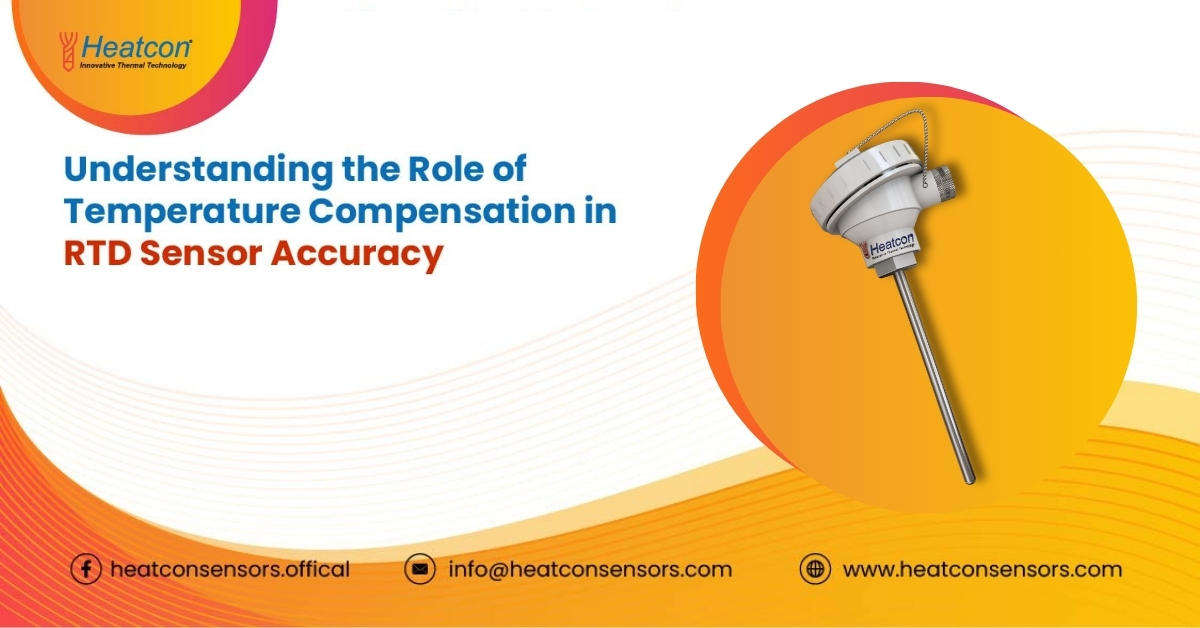RTD Winning the Quest for the Most Accurate & Reliable Sensor
Temperature happens to be the ubiquitous parameter in limitless industry processes & applications, where precision & reliability hold paramount importance. This is where Resistance-Temperature-Detector or RTD stands out as the most accurate & reliable sensor for measuring temperature(s) across various industries, from the automotive sector to the aerospace industry and beyond. However, guaranteeing the greatest accuracy in these temperature readings calls for more than just the inherent properties of these sensors. Enter temperature compensation, which happens to be a critical mechanism elevating RTD sensor accuracy to new heights.
The Principle That RTD Operates on!
At its core, RTDs operate on the principle that the resistance of some materials changes as expected with temperature variations. Platinum happens to be the most common material being used in these RTD sensors owing to its highly linear resistance-temperature relationship. Still, despite this inherent linearity, RTDs could be prone to errors that are usually caused by external factors like self-heating effects, lead resistance, and, most notably, changes in the ambient temperature.
Talking of RTD Sensor Accuracy
Temperature compensation, to some degree, addresses the impact of ambient temperature changes on RTD sensor accuracy. This compensation process tends to involve calibrating these RTD sensors against known temperature standards across a range of temperatures. By characterizing the response of this sensor to temperature changes and then incorporating that data into output calculations, RTDs equipped with temperature compensation algorithms can yield better accuracy, even in varying environmental conditions.
Callendar-Van Dusen Equation
A primary method in temperature compensation is the Callendar-Van Dusen equation. This empirical formula models the resistance-temperature relationship of platinum RTD sensors across a wide range of temperatures. By incorporating the coefficients from careful calibration, this equation (Callendar-Van Dusen) tends to compensate for any deviations from ideal behaviour, which ensures that the RTDs would maintain great accuracy across varied operating conditions.
Benefits of Temperature Compensation
The benefit of temperature compensation extends beyond just achieving accuracy. By mitigating the effects of temperature variations, compensated RTDs give out better stability & improved repeatability, both of which happen to be crucial factors in applications where precise temperature control is highly essential. Whether in lab settings, industrial-run processes, or critical environmental monitoring systems, this ability to rely on consistent & accurate temperature measurements is central.
Adaptability & Reliability of RTD Sensors in Dynamic Environments
Advancements in sensor technology & signal processing algorithms have tended to enable real-time temperature compensation. This allows RTDs to dynamically adjust their outputs in reaction to changing environmental conditions. This real-time compensation capability further increases their adaptability & reliability in dynamic operating environments. This ensures uniform performance even in the face of rapid & recurrent temperature fluctuations.
Conclusively, temperature compensation tends to play a supreme role in maximizing the RTD sensor accuracy & reliability. By accounting for the influence of ambient temperature variations, compensation algorithms elevate the performance of RTD sensors to unprecedented levels of accuracy & stability. As industries continue to ask for ever-higher standards of measurement accuracy, temperature compensation tends to remain an indispensable tool in this quest for excellence in temperature sensing technology. Heatcon Sensors will provide you with the best range of such products in this regard!


